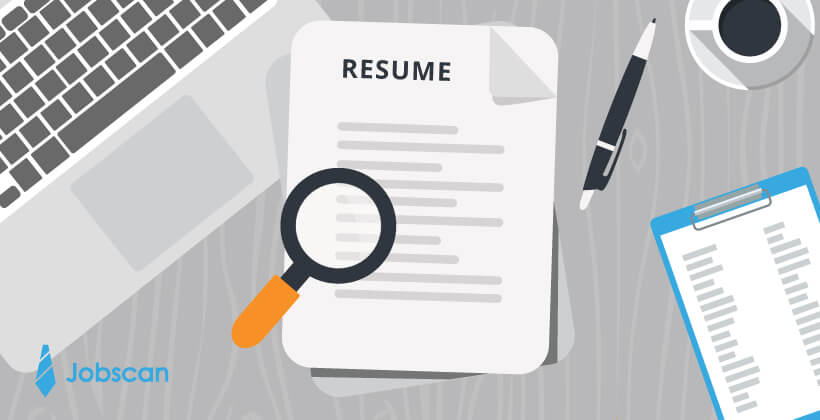Technology is taking over our lives so rapidly. One day we were learning what a DVD player is and now a chip that can translate music to your brain is coming out.
So if the technology is getting into our head, there is no surprise that it gets into the recruitment process. We are already used to HRs monitoring our social media profiles. So we try to arrange them accordingly and move funny but inappropriate memes to the close friends section.
There is yet another friend of HR from the IT department. Its name is Applicant Tracking System or ATS for short.
There are so many candidates applying for jobs nowadays. The situation gets so much more heated up when it comes to positions at popular brands and first-class companies. Therefore, when one receives 400+ applications, it is almost impossible to go through all of them. Even if it is possible, we doubt, you can find an HR who will really go through all of them. So they kind of use a cheat code – ATS. It automatically goes through resumes and looks for specific keywords that an HR has set.
“By using ATS, irrelevant candidates do not even get to the moment when an HR looks at their application. It has its cons though. You may be a perfect candidate for this position but if you have not used the right words, no one will ever know that you were actually great.”
HR Manager from Preply.com
This article will help you to avoid losing your chance because of some software. We will learn how to write a keyword-optimized resume that will help you to totally end up on the HR’s desk.
1. Start with the field or job—words that relate

Basically, those are a must for any resume. You need to find words that are relevant for the position you are applying to and the industry that you are going to work with. Thus, the main words that you have to include are your position and the company that you want to call your workplace.
Okay, position and company, what do I do next? Obviously, those are not quite enough. Do not forget to include all the hard skills that are necessary for this position. If you are not quite sure what those are, put some effort into reading job listings. You will notice that there are some skills that every single company requires.
Looking at job listings works not with hard skills only though. You can find any field- or job-related words that your employer will probably look for. You can also visit their site and look for the most repeated words. Look at how the company describes itself. Is it about loyalty and efficiency? If you are loyal and efficient, then you are a great fit for them. Use those words and get through the ATS check.
You have a much easier option too – just use good old Google. People already figured out ATS secrets and gathered all the words. Neat and shiny, they put them up for almost every industry and position.
2. Review the posting and requirements
Posting and requirements should be the main focus of yours. It is the place where the employer directly says what they expect you to be, what their perfect candidate looks like.
Look for specific skills, abilities, and training that are listed. Basically, your resume is a posting, except it is not a requirement but your claim that you fit those requirements. Therefore, to make your resume as successful as possible, you will have to create multiple versions of it so that it can fit every company that you apply to.
However, if you do not possess all the skills or abilities needed, you should not claim that you do. It will all pop up in the interview and you will not only be embarrassed but it is highly unlikely that you will get an invitation to an interview from this company ever again. If you are afraid that you will not have enough keywords otherwise, concentrate on the soft skills keywords and industry keywords.
3. Choose the specific words you intend to use before you craft that resume
You may think that it is easier to write a resume and then insert the right words. Actually, it is much more productive if you think about those beforehand. Otherwise, you will write a resume and then rewrite it almost completely to use the keywords that will guarantee you a spot on the employer’s table.
It can also help you to sort out what exactly you want to tell in your resume. People tend to change jobs so often now and it happens a lot that you have a very long work history. Choosing the keywords beforehand will help you to realize which jobs are the most relevant for the positions that you are applying to now.
If you are a complete novice in writing the resumes, it helps with figuring out the structure as well.
4. Place the keywords naturally within the text of the resume
No matter what, you still write a resume for a person, not a piece of machinery. If you end up spamming with keywords without any context, you will likely go through ATS but you will never be able to make it to an actual interview.
In order to see how natural your keyword placing is, read it out loud or ask someone to go through the document. There is nothing wrong with reaching out for help. On the contrary, you can get valuable insights into your interpersonal skills that your friends noticed. It may help you to stand out among other candidates.
There are various tools on the market as keyword checker that help you optimize your resume for relevant keywords in order to increase your chances to get noticed by ATS software and land an interview. Such tools collect detailed information about ATS algorithms and based on the data collected enhance your resume to make it rank among top candidates.
Most of the resume optimization tools offer a free resume scan, so you could see how the instrument operates and decide whether or not it works for you. They also identify hard and soft skills that are needed for certain positions and make suggestions accordingly. According to research, resume enhancement tools significantly simplify the job search process.
5. Distribute keywords evenly throughout your resume
So it is easy to fall into that trap: you put all the keywords at the beginning of your resume, in order not to deal with it once and not to stress out about choosing your wording in the rest of the resume. Yet, it usually looks very unnatural and spam-like. Try to put more effort into it and put keywords in different parts of your resume. Education, training, work history, and soft skills are great sections for doing so.
If you can use relevant words in your work history only, then let it be, of course.
Indeed, inserting keywords requires much more thinking and time than writing a resume freely. However, it turns out to be more productive in the end, since you get more responses. Moreover, the skill of using keywords will get better and you will not have to work on every resume that much.
6. Don’t rely on a “use X number of keywords X times” approach
It would be great if there is a precise recipe for writing a resume using keywords. However, there is not. If anyone claims that they know a perfect amount of keywords, it is possibly not true. Every resume has a common form but the inside varies from person to person a lot. Otherwise, employers would go insane from choosing between candidates who seem to be the same person.

Conclusion
That being said, there is no particular amount of keywords that you must use. There is no particular place where you should use them. The key to success is using them naturally. You aim at an HR, not at ATS. The main decision is still after people, no matter how progressive our technology may be.




